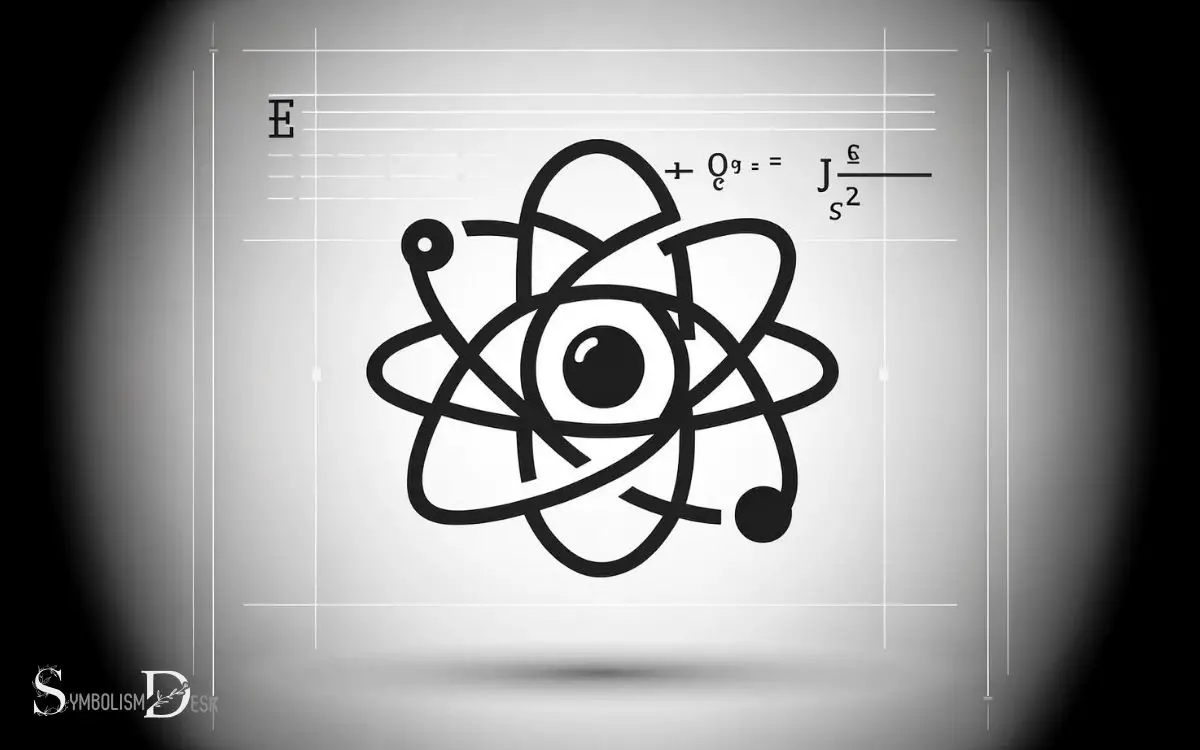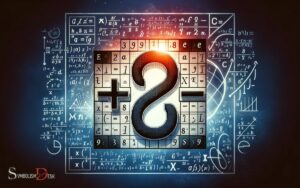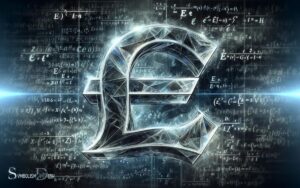Symbol for Math and Science: Universally
Mathematical and scientific symbols are crucial for conveying complex ideas succinctly and universally. They form the backbone of equations, facilitating problem-solving and communication within and across disciplines.
These symbols are steeped in history and continue to evolve, ensuring their relevance and utility in modern math and science.
Symbols in math and science are not just shorthand for longer expressions; they are essential tools that allow for the concise transmission of information.
For example, the symbol “=” denotes equality between two expressions, while “π” represents the mathematical constant pi.
Here’s a brief overview:
Symbols like “E=mc²” transcend linguistic barriers, enabling seamless scientific discourse worldwide.

Key Takeaway
Comprehensive Guide to Math and Science Symbols
| Symbol | Meaning | Discipline |
|---|---|---|
| + | Addition | Mathematics |
| – | Subtraction | Mathematics |
| = | Equality | Mathematics |
| Δ | Change/Difference | Mathematics/Science |
| π | Pi (≈3.14159) | Mathematics |
| h | Planck’s constant | Physics |
| e | Electron charge/ Euler’s number | Physics/Mathematics |
| i | Imaginary unit | Mathematics |
| ∇ | Nabla (Gradient/Divergence/Curl) | Mathematics/Physics |
| ∑ | Summation | Mathematics |
Historical Evolution of Symbols
The historical evolution of mathematical and scientific symbols traces back to ancient civilizations such as the Babylonians, Egyptians, and Greeks.
These early cultures developed symbolic notations to represent numerical values, geometric concepts, and basic arithmetic operations.
The Babylonians, for instance, used a base-60 positional numeral system, which influenced the way we measure time and angles today.
The Greeks contributed significantly by introducing symbols for unknown quantities and geometric shapes, laying the groundwork for algebra and geometry.
As time progressed, scholars like Rene Descartes and Gottfried Wilhelm Leibniz further refined mathematical notation, paving the way for the complex symbols used in modern mathematics and science.
This historical journey provides a foundational understanding of the symbolic language that underpins mathematical and scientific discourse, leading us to explore the universal language of mathematics.
Universal Language of Mathematics
Mathematics serves as a universal language, transcending cultural and linguistic barriers. The use of cross-cultural mathematical symbols has played a crucial role in facilitating communication and understanding across diverse communities.
The importance of clear and precise mathematical notation cannot be overstated, as it forms the foundation for effective communication and collaboration in the field of mathematics.
Math as Universal Language
Recognized worldwide as a universal language, mathematics serves as a powerful tool for communication and understanding across diverse cultures and disciplines.
Its universal nature lies in its ability to convey complex ideas and relationships using symbols and notation that transcend linguistic and cultural barriers.
Here are four key reasons why mathematics is considered a universal language:
- Precision: Mathematical concepts are defined with exactitude, leaving no room for ambiguity or misinterpretation.
- Consistency: Mathematical principles and laws remain constant regardless of geographical location or cultural background.
- Universality: Mathematical truths apply universally, with the same principles holding true for all individuals, irrespective of their cultural or linguistic background.
- Transferability: The application of mathematical concepts in solving real-world problems is independent of language, enabling seamless knowledge transfer across cultures and borders.
Cross-Cultural Mathematical Symbols
A key aspect of the universal language of mathematics is the use of common mathematical symbols that transcend cultural boundaries.
These symbols serve as a means of communication that allows mathematicians from different cultures to understand and work with mathematical concepts.
The table below showcases some fundamental mathematical symbols that are universally recognized and used across different cultures:
| Symbol | Meaning |
|---|---|
| + | Addition |
| – | Subtraction |
| × or * | Multiplication |
| ÷ or / | Division |
| = | Equality/Equivalent |
These symbols are fundamental to mathematical operations and are universally understood, emphasizing the role of mathematics as a global language.
Their consistent usage enables mathematicians worldwide to collaborate and build upon mathematical knowledge, transcending cultural and linguistic barriers.
Importance of Mathematical Notation
The universal recognition and consistent usage of fundamental mathematical symbols, as discussed in the previous subtopic, underscore the importance of mathematical notation as the universal language of mathematics.
This notation is crucial for several reasons:
- Clarity: Mathematical notation provides a concise and precise way to represent complex mathematical concepts, facilitating clear communication and understanding.
- Efficiency: It allows for the efficient expression of mathematical ideas, enabling mathematicians and scientists to convey complex concepts concisely.
- Standardization: Mathematical notation establishes a standardized language that transcends cultural and linguistic barriers, promoting global collaboration in the field of mathematics.
- Historical Continuity: It preserves the continuity of mathematical knowledge across generations, ensuring that mathematical concepts remain accessible and comprehensible over time.
The significance of mathematical notation becomes even more evident when considering its role in symbolism in scientific notation.
Symbolism in Scientific Notation
In scientific notation, the symbolism of numbers is represented through the use of a double preposition to convey both magnitude and precision.
This notation allows for the concise representation of very large or very small numbers, commonly used in scientific and mathematical calculations.
The symbolism in scientific notation consists of expressing numbers in the form of a × 10^n, where ‘a’ represents the significand and ‘n’ represents the exponent.
This representation allows for a clear distinction between the numerical value and the order of magnitude. It also enables easier manipulation of large or small numbers, facilitating calculations and comparisons.
By employing scientific notation, the symbolism of numbers becomes a powerful tool for scientists and mathematicians to work with extremely large or small values in a precise and manageable manner.
Role of Symbols in Equations
One must recognize the significant role played by symbols in equations used across the fields of math and science. Symbols in equations serve as powerful tools for representing complex mathematical and scientific concepts. They offer a universal language that transcends geographic and linguistic boundaries, enabling scientists and mathematicians to collaborate and share knowledge globally. Interestingly, some may interpret certain math symbols that reflect personality, as individuals resonate with symbols that align with their problem-solving approaches or intellectual inclinations. This subtle connection highlights how abstract symbols can carry personal and universal meanings simultaneously.
Their role includes:
- Clarity: Symbols provide a concise and precise way to represent mathematical and scientific ideas, making equations easier to understand and work with.
- Efficiency: They allow for the concise representation of complex relationships, enabling scientists and mathematicians to express ideas in a compact form.
- Universality: Symbols transcend language barriers, enabling researchers worldwide to communicate and collaborate effectively.
- Abstraction: Symbols enable the generalization of concepts, allowing for the development of theories and theorems that apply across diverse scientific and mathematical domains.
Understanding the critical role of symbols in equations is essential for appreciating their impact on scientific communication.
Impact of Symbols on Scientific Communication
Undoubtedly, symbols in equations have profoundly influenced scientific communication by providing a universal language for expressing complex ideas across diverse fields of research.
The impact of symbols on scientific communication is far-reaching, enabling researchers to convey intricate mathematical and scientific concepts efficiently.
Symbols serve as a compact form of representation, allowing for the concise expression of complex relationships and phenomena.
Moreover, they transcend language barriers, facilitating global collaboration and understanding in the scientific community.
The table below illustrates the varied usage of symbols across different scientific disciplines, showcasing their integral role in communicating complex concepts.
| Discipline | Symbol | Purpose |
|---|---|---|
| Physics | ∑ (sigma) | Represents summation in equations |
| Chemistry | H2O | Denotes water molecule in chemical formulas |
| Mathematics | π (pi) | Represents the ratio of a circle’s circumference to its diameter |
| Biology | DNA | Symbolizes the building blocks of life |
| Astronomy | ƒ (lambda) | Represents wavelength in astronomical equations |
Future Trends in Symbol Usage
The future trends in symbol usage are likely to be influenced by the evolving landscape of education, where symbols play a crucial role in conveying complex mathematical and scientific concepts.
Additionally, the impact of digitalization on symbol creation, dissemination, and interpretation is expected to shape how symbols are utilized in the future.
Moreover, the increasing globalization and cross-cultural exchange may lead to the adoption of new symbols or the adaptation of existing ones to better resonate with diverse audiences.
Symbol Evolution in Education
In the context of mathematics and science education, the evolution of symbols for future trends in usage is a topic of growing significance.
This evolution is influenced by several factors that shape the way symbols are used and perceived in educational settings:
- Digitalization: The increasing integration of technology in education is likely to impact the way symbols are taught and understood.
- Globalization: With the globalization of education, there is a need for symbols that are universally recognized and understood across different cultural and linguistic backgrounds.
- Interdisciplinary Connections: As the boundaries between different scientific disciplines blur, there is a growing need for symbols that can effectively communicate complex ideas across disciplines.
- Inclusive Representation: There is a push for symbols that are inclusive and representative of diverse perspectives, ensuring that all students feel represented in their educational materials.
These factors are likely to shape the future trends in symbol usage within mathematics and science education, impacting the way students learn and engage with these subjects.
Impact of Digitalization
Digitalization’s influence on mathematics and science education necessitates a reevaluation of the symbols used to convey complex concepts in an increasingly technologically integrated learning environment.
As digital tools and platforms become more prevalent in education, symbols must not only be comprehensible on paper but also adaptable to digital formats.
This shift requires symbols to be easily translatable across various digital mediums, ensuring accessibility and understanding for all students.
Moreover, the increasing use of digital platforms opens up opportunities for interactive and dynamic symbols that can enhance the learning experience.
As education becomes more digital, the symbology must evolve to accommodate these changes, ensuring that mathematical and scientific concepts are effectively communicated in this new digital landscape.
This sets the stage for exploring how symbol adoption can be made more inclusive and accessible across different cultures.
Cross-Cultural Symbol Adoption
Amid the ongoing digital transformation of education, the evolving landscape of mathematical and scientific symbols necessitates a forward-looking examination of cross-cultural symbol adoption and future trends in their usage.
- Globalization: As education becomes more globally interconnected, the adoption of universally recognized mathematical and scientific symbols will likely increase.
- Cultural Sensitivity: Educators and content creators will need to be mindful of cultural variations in symbol interpretation to ensure inclusivity and understanding across diverse audiences.
- Technology Integration: Advancements in technology, such as real-time language translation and augmented reality, may facilitate the seamless integration of symbols across different cultures and languages.
- Standardization Efforts: International organizations and educational institutions may work towards establishing standardized mathematical and scientific symbols to promote consistency and comprehension on a global scale.
Conclusion
The evolution and usage of symbols in mathematics and science have played a crucial role in the development and communication of complex concepts.
As the universal language of these disciplines, symbols have allowed for efficient and effective communication across cultures and languages.
Moving forward, the continued innovation and adaptation of symbols will further enhance the accessibility and understanding of mathematical and scientific principles, like a vibrant tapestry weaving together the fabric of knowledge.






